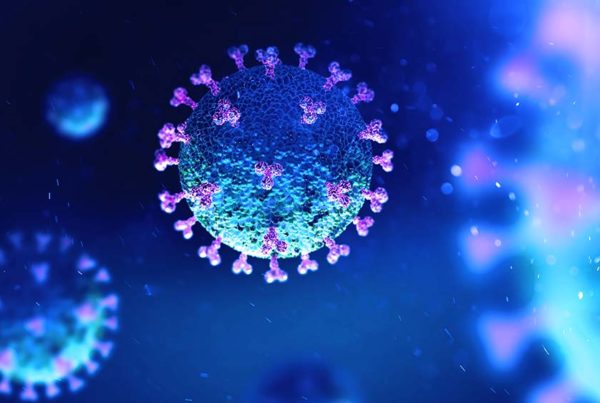
Blocking vitamin D production created a serious health crisis for decades. Now we’re paying the price.
Forty years ago my views on sun exposure were considered lunacy, and 20 years ago I was branded a heretic. But today no one can ignore the research confirming, clarifying and even further adding to our knowledge — clearly safe sun exposure helps prevent disease, including skin cancer, and sunscreen use may be dangerous.
Nevertheless, particularly in the northern hemisphere, you’re still being blasted with sun-scare and sunscreen hype now that summer is here, even smelling and inhaling the latest spray-on products, not unlike second-hand smoke. These bad habits have to stop.
Researchers writing in leading dermatology journals have been seeing the sunlight in recent years. “The lack of appreciation of the importance of sensible sun exposure for providing children and adults with their vitamin D requirement has led to a worldwide vitamin D deficiency pandemic” (Wacker and Holick, 2013). This is now the growing consensus about the importance of sun exposure in a world where sun-scare, wisely leveraged to sell sunscreen, has caused severe illness and disease from low vitamin D levels.
The Centers for Disease Control and Prevention also states that low vitamin D levels are associated with sunscreen use. And, it’s estimated that 25 percent of the world’s healthcare dollars are spent on the fallout from low vitamin D.
But the problem is worse than it seems as many more without deficiency have insufficient levels of vitamin D that also impair health and fitness. (I’ve written about these and other topics, linked at the end).
It’s time to get more aggressive with an often emotional issue that has blocked millions of people — billions, actually — from better health and fitness. Much of this fear stems around the deadliest form of skin cancer, melanoma, and the heavily promoted use of sunscreen by the cosmetic industry. While sunscreen is the first thing most people consider with mention of melanoma, this so-called preventive tactic does not work.
Moreover, sunscreen can block the production of our main source of vitamin D, the sun. Since vitamin D also helps prevent skin (and other) cancers, we need to move beyond this this scheme — the false notion — that sunscreen prevents cancer. People need to know that children and adults need regular healthy sun exposure.
Unfortunately, this won’t happen too soon as sunscreen continues to be a booming business. Does business trump science? Yes. Melanoma rates keep rising right along with sunscreen use. And, as the D deficiency impairs more people, the wide range of serious dysfunction affects the brain and immunity, muscles and bones, hormones, and even athletic performance just to name a few. Low D levels in pregnant women are associated with a 400 percent increased risk for a Cesarean section.
It is now estimated that billions of people — about half the world’s population — have low levels of vitamin D.
Even in Australia, with high skin cancer rates, it is now recognized that years of intense sunscreen messages led to more than 40 percent of the population being D deficient — so the Australian Dermatology Society now recommends sensible sun exposure. (Meanwhile, ironically, 87 percent of local dermatologists are D deficient, as are more than 90 percent of Indian physicians.)
While other skin cancers are prevalent, melanoma is the most serious. In the U.S., about 100,000 adults are diagnosed with melanoma annually, with about 10 percent dying from it. Those numbers appear to be rising globally. Lighter skin increases vulnerability because it burns easily, with childhood sunburns the more significant contributing factor to later cancers. However, melanomas do not always appear on those body parts exposed to regular sunshine, as systemic factors such as immune function, inflammation and vitamin D status may be as or more important in prevention.
The problem with this is twofold:
- Humans rely on healthy sun exposure as their primary source of vitamin D. Without this source, most people have low D levels that raise their risk for many diseases, and lead to lower quality of life.
- Lifelong vitamin D, and other benefits of being outdoors in the sun, can help prevent skin cancer. For example, studies show that sun exposure in children who are not overexposed/burned may be associated with lower rates of future melanomas.
These facts often cause confusion with some people thinking we should go back to laying out for hours in the midday summer sun for tanning. But no one recommends that. Rather, intelligent sun exposure, which is not associated with sunburn, is healthy.
This information is vital for all people worldwide. Included are those with darker skin who can sometimes get sunburned, have a lower prevalence of skin cancer, but tend to have poorer prognoses and survival rates when diagnosed with it. And, while the prevalence is higher among older adults, adolescents can also develop melanoma. In addition, this article does not apply to cases of serious sun side effects from even minimal exposure, where individualized care is important, including vitamin D status.
There are two categories of sun exposure, normal and abnormal:
- Regular healthy sun exposure — without getting burned — is normal and desirable for our bodies. This does not necessarily increase melanoma risk. Continual, frequent exposure a few times or more a week, including in those who exercise and even work outdoors, offers natural increasing levels of D, and produces a protective tan.
- However, intermittent time in the sun often leads to overexposure. This is the extended or intense exposures experienced more infrequently, typically the first bright day of spring, a family picnic or beach vacation, a sunny marathon, or the abuse of tanning beds. Many grab sunscreen in hopes of protection, but this overexposure is not normal or healthy, and is a strong health risk.
I’ve been emphasizing these and other factors in other articles my whole career, and am not the only one — virtually all health authorities not connected with the cosmetic industry agree today. This includes the normally traditional U.S. Food and Drug Administration. The reason? Research.
Instead of sunscreen being the primary or, as is often the case, the only preventive measures, in many ways it should be the last. And, sun exposure per se is not the skin-cancer cause that is marketed — overexposure, such as that resulting in a sunburn, is. Both ends of the exposure spectrum should be shunned: Don’t avoid being outside in the sun, but don’t abuse it.
A number of factors other than sun exposure can increase the risk of skin cancer:
- Genetics include lighter natural skin color; blue or green eyes; blond or red hair; unusual or large number of common moles; and freckles.
- A family or personal history of skin cancer, especially melanoma, is an increased risk factor.
- Genetic mutations, such as the folate disorder that affects up to 40 percent of the population. LINK
- Environmental change. Ozone and other components in our atmosphere absorb most radiation from the sun, but excess carbon and other chemical emissions have reduced ozone, increasing ground-level UVB levels. So today, it may take less time for overexposure.
- Increased altitude, and reflection from water, sand or snow can increase exposure.
- Nutritional status — factors that regulate immunity, inflammation, body fat and others.
What to Do
First, avoid the hype.
To build vitamin D to healthy levels:
- Obtain regular safe sun exposure.
- Reduce excess body fat.
- Take a natural vitamin D3 supplement (D2 is poorly absorbed).
- Monitor blood levels of vitamin D with regular testing.
To avoid overexposure to the sun:
- Be aware of your time in the sun.
- Use protective clothing when necessary. Light, long sleeve clothes can cover many body areas. Likewise, for pants. A hat too (some having longer sides/back specifically for sun protection. Long hair can also help.
- Avoid periods of peak summer sun — arrange exercise, social events etc. at other times.
Cancer is a process likely going on in all of us. Whether we actually develop the disease depends on many factors. It is influenced by the immune system, inflammatory mechanisms, food intake, chemical exposure, and other factors, including high body fat which reduces the ability to obtain vitamin D from the sun, and a host of genetic mutations.
Being proactive through a healthy lifestyle is obviously important. This includes getting safe sun exposure.
Want more information on these topics? Check out these links:
The vitamin D gap and athletes
The sun and vitamin D: Improving performance
Important sources of vitamin D
Vitamin D tests and supplementation
Read this relative information from the Environmental Working Group, including all the unhealthy chemicals that can be absorbed from sunscreen: https://www.ewg.org/sunscreen/report/imperfect-protection/
Wacker M and Holick MF. Sunlight and Vitamin D. A global perspective for health. Dermatoendocrinol. 2013; 5(1). doi: 10.4161/derm.24494.








